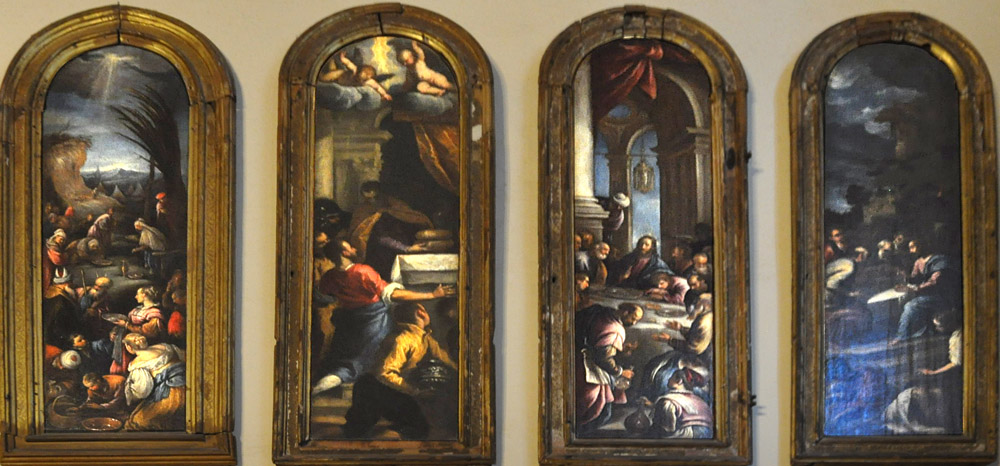Francesco Bassano, Types of the Eucharist

Last quarter of the 16th century
Church of the Redeemer (Il Redentore), Venice, Italy
A "type" is an object or event in scriptural history that points forward to a reality in the New Testament or in the sacraments of the Church. In this case, the four paintings in identical frames point forward to the sacrament of the Eucharist:
-
The fall of manna (Exodus 16:1-18). In the center-left Aaron (rod, crown) talks with Moses (emitting rays from head) while the Israelites gather the manna. The rays of light falling from the sky refer to Exodus 16:10, "behold, the glory of the Lord appeared in the cloud." Some of the manna is being gathered in plates resembling the patens used in the Mass. The two jugs, possibly for wine and thus also indicative of the Eucharist, are not mentioned in Exodus 16 at all.
-
The showbread or "bread of the promise" kept on the altar in the ancient Temple (Exodus 25:30). In Matthew 12:1-8, Jesus answers a complaint of the Pharisees about the disciples taking grain to eat on the Sabbath by referring to I Samuel 21:1-6, where the priest Abimelech gave holy bread to David and his men. In the painting David and the men kneel before the altar like Christians at Mass while Abimelech reaches for the bread. This is the one image of the four that does not have a woman with a jug. Abimelech had said he could give the bread only "if the young men be clean, especially from women."
-
The Last Supper, at the moment when Jesus blesses the bread (Matthew 26:26-30, Mark 14:22-26, Luke 22:14-20). The same paten-like plates seen in the manna painting reappear here, as do another two jugs.
-
The supper at Emmaus (Luke 24:13-32): As above, Jesus blesses the bread. It is in another paten-like plate, and again a woman is bringing a jug.
View this image in full resolution.
Read more about The Fall of the Manna, The Last Supper, and The Disciples at Emmaus.
Photographed at the site by Richard Stracke, shared under Attribution-NonCommercial-ShareAlike license.
